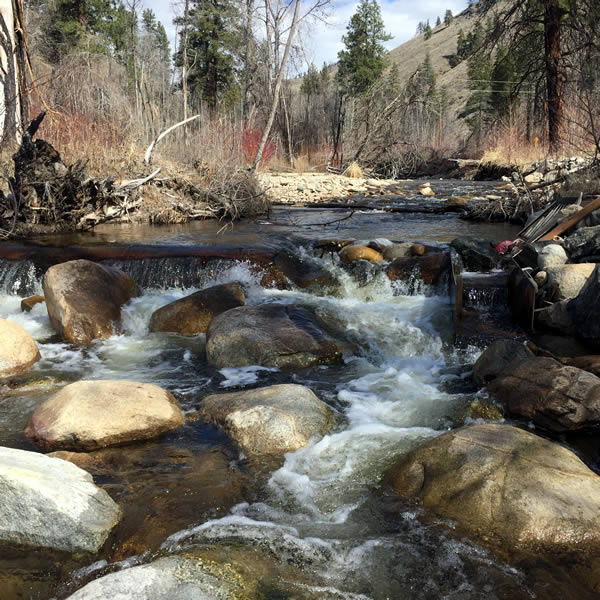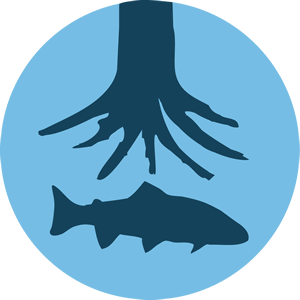Landowners
Protect Streamside Vegetation
A riparian zone is the vegetated area that exists next to a waterway. These areas act as an important buffer between upland activities, such as agriculture or development, and the stream corridor.Riparian zones are extremely important to both riverfront landowners and to fish. Vegetation along the river is a vital part of a river system: it provides nutrient cycling, maintains bank stability, reduces erosion, and buffers inland property from fast moving floodwaters. Plants also help filter surface water runoff from lawns, fields, and roads; and they reduce the amount of chemicals and sediment entering the river. Streamside plants shade the water and their roots provide cover for fish. Clean, cool water is critical to the recovery of endangered and threatened fish.
The simplest and most effective technique for protecting the riparian zone is to leave natural vegetation, soil, and debris such as leaves and fallen trees undisturbed. In places where streamside vegetation has been removed or reduced, landowners can take actions to restore the riparian habitat on their property, enhancing both the integrity of their own land and the quality of the river system.
Plant Trees
Replanting and expanding a riparian buffer improves bank stability and the overall health and function of the river. Natural regeneration (just leaving it alone) is the least expensive method of establishing a riparian buffer, but it takes a long time for a tree to grow from seed. When planting a riparian site, native trees and shrubs tolerant to periodic water saturation should be used. Grasses can be planted for immediate erosion control in the interim time before the trees and shrubs become established. Landowners will need to water the new plants in the summer for a few years until the plants are able to survive on their own.
Build a Fence
Allowing cattle and other livestock to access the stream increases bank erosion, water pollution, and reduces streamside vegetation. Placing exclusion fencing and adding alternative water sources for livestock to keep them out of the water can greatly improve the overall heath and function of a stream.
Host a Habitat Project
Many of our projects are a collaborative effort with local landowners. If you are interested in learning more about the habitat restoration potential of your property, please contact us.
Our projects are designed to address one or many of the following components:
Riparian planting and wetland vegetation to increase habitat and shade water
Installing woody structures to increase channel complexity
Reconnect floodplains and side channels to increase juvenile rearing habitat
Removal of a barrier that prevents or hinders fish passage
Landowners interested in exploring conservation options for their riverfront property or irrigators who want to improve the efficiency of their water delivery systems can contact us for more information.
“We all value the water we have, and we all use it and see it in different ways.”








